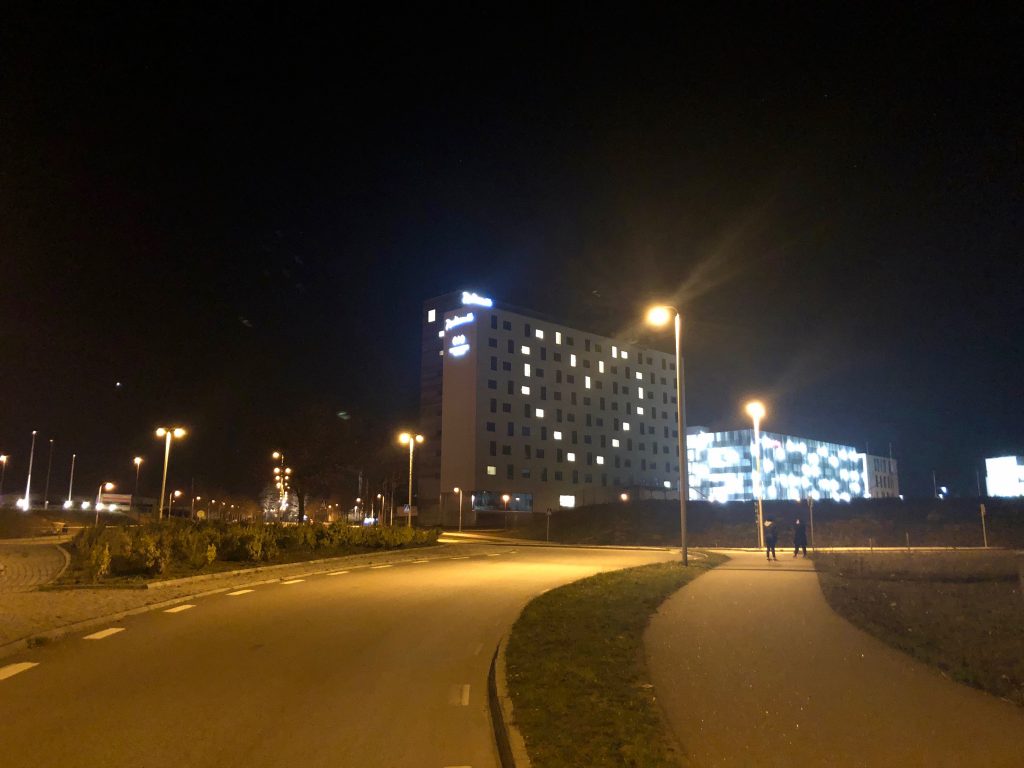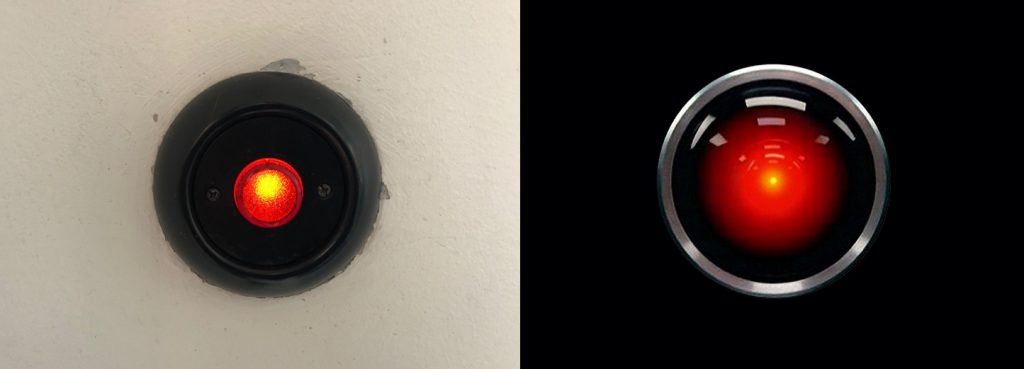¶ From early 2020 COVID-19 sparked a time of disruption. What had once been normal was renegotiated. When The Virus started to spread, the conditions of Mundania were challenged. Some patterns of everyday life were transformed and new ones emerged. New imaginaries took hold. Social distancing and proximity, mobility and domesticity, as well as offline-integrity and technological connectivity had to be reconsidered.

¶ When futures are uncertain. When structures and systems are in flux, we need new concepts, new methods, new approaches and hybrid forms to orient ourselves. Mundania is one attempt along these lines. By framing the way emerging technologies disappear into everyday life as a process of mundanisation, curiosity and the wayward can be put at the forefront. New thoughts can hopefully be provoked in academic fields already characterised by an abundance of theory and studies.
¶ The Mundania concept can be related to discussions within some different contexts. Although the academic disciplines studying media, technology and everyday life is a densely inhabited and yet dynamic field, we still need new approaches to understand how the sublime, the thrilling, the unexplainably complex become part of bland and boring everyday life. How do emerging technologies turn from vaporware, via novelties to invisible and ignored infrastructure? Why are some technologies successful and others not? And what does success really mean here? Malevolent technologies are also becoming part of the obfuscated fabric of everyday life.
¶ Since the 1990’s the word domestication has been used to describe how technology is incorporated in user’s everyday life.[1] It captures how technology is adopted, how negotiations take place, and even how users may affect future strategies of producers. But we still need a word for the processes through which incomprehensible complexity is turned into the ordinary, a word saying something about how layers between ominous complexity and commonplace everyday life are engendered when technologies are habitually used. Because this is not about something wild becoming domesticated or tamed. It is not about something wild becoming tamed and domesticated.
¶ Complex technologies are only seemingly converted step-by-step into controlled parts of everyday life. Where are the ends of control? How are dependencies engendered? Mundanisation is an attempt to address these questions. It is meant to capture how complex arrangements of technologies and human organisation maintain its incomprehensible unmanageability while still being transmuted into the ordinary, the mundane, the commonplace in people’s everyday lives. Normalising what before, or at its introduction, was seen as impossible, frightening or fantastic.
¶ Mundanisation is basically characterised by two principles. Technological and organisational workings can firstly be obscured “by design”. Black-boxing of technologies and intentional seclusion of operations take place “under the hood” (Pasquale 2015). Media scholar Lisa Parks has called this phenomenon “infrastructural concealment”[2]. Mundanisation is also evoked by the very everyday use of technologies and things (Highmore 2001; Löfgren 2015; Shove 2003). This is the ignorance that is engendered when things become parts of unreflected patterns of behaviour. These two parts reinforce each other.
¶ Mundanisation has happened for a long time. It is how routines, habits and patterns of everyday life are formed. The processes of mundanisation have become more easy to recognise in modern and industrial societies. Widespread standards, the prerequisite for industrialisation, shifts knowledge in the head to knowledge in the world, to use the words of design theorist Donald Norman. Precise behaviour can emerge from imprecise knowledge.[3] You don’t have to learn exactly how standards and protocols are assembled and organised to use them. A USB-C-connector will fit another USB-C-connector. You don’t even have to be able to descibe how it looks. This is the logic of standardised systems. You can use a coin without remembering exactly how it looks. Heads or tails? King or queen? Statesman or animal? Just remember the size, material and how it feels in your hand. When something is standardised, it should “just work and fit”, without you having to think about it.

¶ Power buttons and all the hidden wirings and connections, then followed by radio transmissions, moving images on screens, software and satellites, The Internet and The Clouds. Data centers and protocols. AI, “smart” things, homes and cities. It is all there, yet most of what manifests it is obscured. The continuous supply of electricity has been flowing mostly unnoticed for decades. Now, during the first decades of the 21th Century, new layers of technology are becoming ambient. More and more GPS-based services, online shopping, camera surveillance, machine learning and ever-present touchscreens. Infrastructures and interfaces. Technologies harnessed by software, enmeshed through the logistics of wired as well as wireless networks. Utterly complex systems are seamlessly intertwined with people’s lives.
¶ When technology and infrastructure work, it is experienced as a backdrop to life, as ambient, part of the atmosphere, as uncomplicated parts of daily practices. Technology becomes woven into, what geographer Nigel Thrift has called, epistemic wallpaper.[4] Infrastructures, supply-chains and distributed power relations are rarely reflected upon when technologies have been effectively integrated in everyday life. Like wallpaper, it is just there, while we are doing whatever we are doing.
¶ Services, things and technologies can start as something utterly fascinating, as something awkward or even disquieting. Then they disappear in the muddle of everyday life, they become almost impossible to bring up in discussions or small talk. At some point in the life cycle of a popular technology, extensive critical reflection and discussion seems to vanish. Even though there are obvious risks and uncertainties, many technologies are still used. They are considered as normal. We need to know more about when and how this really happens. Despite wide-spread awareness about potential threats, these are ignored. When technologies become part of routines and habits, large parts of technological assemblages and organisational operations are constantly ignored. Until something happens. Like a virus. Something that force us to renegotiate, reconsider and reimagine.
[1] The use of the word ”domestication” in relation to media appeared first in: Silverstone, R., Hirsch, E., & Morley, D. (1992). Information and Communication Technologies and The Moral Economy of The Household. In: R. Silverstone & E. Hirsch (Eds.), Consuming Technologies: Media and Information in Domestic Spaces (pp. 115–131). London: Routledge, and have subsequently been used and developed in a number of scholarly contexts. See eg. Berker, T., Hartmann, M., & Punie, Y. (2006). Domestication Of Media And Technology. London: Open University Press.
[2] Parks, Lisa (2012): Technostruggles and the Satellite Dish: A Populist Approach to Infrastructure. In: Bolin, Göran (Ed.). Cultural Technologies: The Shaping of Culture in Media and Society. London: Routledge 64–84.
In an interview Parks expound on her interest in infrastructural invisibility and concealment. She describes how she became interested in the topic and also stress the social and gendered dimensions of technological visibility.
My interest in thinking about infrastructures and their ‘invisibility’ was born out of a recognition of my own socialization not to notice them. Over time I have become increasingly aware of technological objects in the built environment that are relevant to global media economies – telecom towers, satellite Earth stations, data centres and other infrastructure sites. I learned the language of cinema. I knew how to read a TV text. But I did not really understand the mechanics or physical arrangements of systems used to distribute audiovisual content to screens or interfaces. It was that moment of recognizing that this was really a problem of disciplinary training and knowledge, but also of gendered socialization.
Parks, Lisa (2019). Televisual epistemologies and beyond. In: Journal of Visual Culture, 18(2), 234–249. Page: 241.
In the interview she also advocates artistic approaches to imagine and visualize complex infrastructures. She also points out a risk that the quite broad interest in the studies of media infrastructures can lead to a kind of scholarly entropy around the concept.
There are now quite a few young scholars and graduate students interested in researching and theorizing various aspects of media infrastructures. With any concept or sub-topic in a field, an entropy can start to set in when lots of people gravitate to a concept at once. Suddenly, the term starts to become overloaded and not as useful any more. I argue that we need to have more sub-level concepts in media infrastructure studies, concepts that help to account for the diverse socio-technical relations that materialize media infrastructures in different parts of the world.
Parks, Lisa (2019). Televisual epistemologies and beyond. In: Journal of Visual Culture, 18(2), 234–249. Page: 242
My work with Mundania and processes of mundanisation is one way to move along with studies of the infrastructural and to see where these concepts might lead.
[3] Norman, Donald A. (1998): The Design of Everyday Things. Massachusetts: MIT Press. See also: Willim, R. (2005). Menuing. Ethnologia Europaea. Journal of European Ethnology, 35(1–2), 125–129.
[4] Nigel Thrift discussed epistemic wallpaper as part of arguments about how technologies relates to thinking and spatial awareness. Thrift, N. (2004). Movement-space: The changing domain of thinking resulting from the development of new kinds of spatial awareness. Economy and Society, 33(4), 582–604. https://doi.org/10.1080/0308514042000285305 See also: Bowker, Geoffrey C. and Star, Susan Leigh (1999), Sorting Things Out: Classification and its Consequences (Cambridge Massachusetts: MIT Press).
Version History
V. 1.1 June 16 2020. Added reference to Lisa Parks and her work on infrastructural concealment and visibility, see note 2. References to Bowker and Star and Peters added.
V. 1.2 November 19 2020. Reference added to Highmore, Löfgren and Shove, and the discussion on domestication was slightly modified.